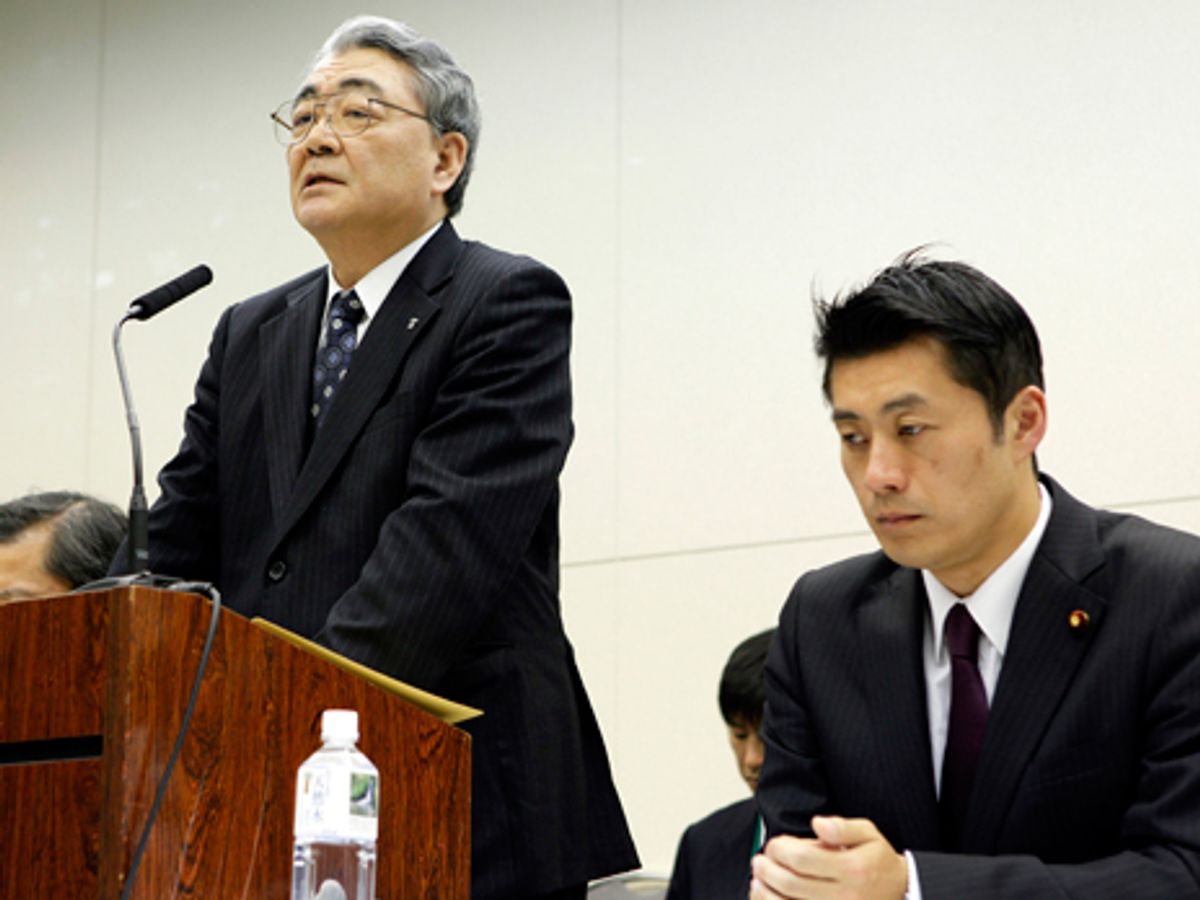Editor's Note: This is part of the IEEE Spectrum special report: Fukushima and the Future of Nuclear Power.
Today, Japan prime minister Yoshihiko Noda held a press conference and declared that the Fukushima Dai-ichi nuclear power station is officially stable. That means the power station's owner, Tokyo Electric Power Company (TEPCO), has met its deadline and brought the three damaged reactors to a state of "cold shutdown" before the end of the year. The announcement comes more than nine months after a monstrous tsunami knocked out the plant's electricity and cooling systems, sending three nuclear reactors spiraling towards meltdown.
So is Japan's national nightmare over? Short answer: Hah. No.
As defined by TEPCO, a cold shutdown means that water temperatures in reactors 1, 2, and 3 -- the three that were in use at the time of the 11 March earthquake and tsunami, and that therefore had lots of very hot nuclear fuel -- have been stabilized at below 100 degrees Celsius. It also requires that the water circulation system is stable and secure. Together, these two conditions should ensure that the cooling water inside the reactors cannot boil away, uncovering the still-hot nuclear fuel and allowing it to restart a self-sustaining fission reaction.
But the Fukushima Dai-ichi power station is still a disaster zone. TEPCO recently admitted that almost all of the nuclear fuel in reactor 1 had melted through the reactor pressure vessel and dropped onto the concrete base in the primary containment vessel. The company also stated that some of the fuel in reactors 2 and 3 had breached those pressure vessels as well.
The water that circulates through these three reactors to keep them cool becomes extremely contaminated with radiation, which required TEPCO to set up a makeshift water decontamination system. That system was plagued by problems when it was first set up this summer, and just last week it sprung a new leak. If a major problem arises and the system is forced to shut down, contaminated water will again accumulate at the site.
Decommissioning the plant, the government has said, is likely to take up to 40 years. IEEE Spectrum previously sketched out the likely conditions at the Fukushima site and the neighboring areas 1, 10, and 100 years after the accident, but here's a summary of what will happen now that the plant has reached cold shutdown. First, the spent nuclear fuel will be removed from spent fuel pools at all of Fukushima's six reactors -- that process will likely begin next year. Meanwhile, experts will begin studying the location and condition of the melted fuel in reactors 1, 2, and 3, and will begin to plot out ways to safely remove it. It will likely be 25 years before that removal process is complete.
The cleanup of surrounding areas is just as daunting. The Japanese government created mandatory evacuation zones -- a ring that extends 20 kilometers from the Fukushima plant, and an additional area to the northwest where the winds carried radioactive particles -- and all the towns in those areas are still empty. More than 100,000 people are living as refugees, wondering if they'll ever return to their homes. The government has only said that it will begin reviewing the evacuation zones now that the plant is stable.
To make the contaminated towns and countryside safe, the Japanese government will have to scrape the contaminated topsoil from as much as 2400 square kilometers, an area that Reuters notes is about the size of Luxembourg.
So while today's announcement can certainly be considered a positive step, there's still decades of work to be done. Check back with me when I'm in my 70s and I'll tell you if the disaster is finally over.
Image: Kiyoshi Ota/Bloomberg/Getty Images
Eliza Strickland is a senior editor at IEEE Spectrum, where she covers AI, biomedical engineering, and other topics. She holds a master’s degree in journalism from Columbia University.





